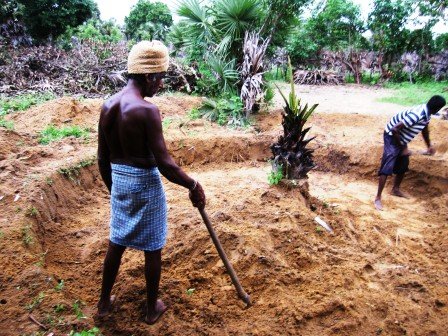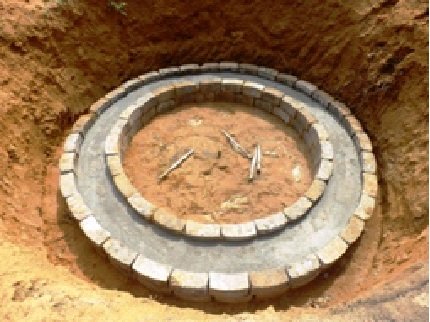By Miyako Hamasaka | PR Manager
Speaking of JEN assistance to regain livelihood, how can you “regain livelihood?”. We would like to answer this question.
Returnees, JEN is supporting, are living in areas, where agriculture is their main source of income. Before the conflict back in the 80’s, most of the households were engaged in agriculture. The last three decades, while they were evacuating; however, lands were devastated, as farming equipment and water supply facilities were stolen. After they came back to their homeland, they manage to engage in farming on a small scale during the rainy season. In the dry season, they have no choice but to do day labor jobs and they are at risk of losing these jobs at any time. JEN is supporting these returnees that they will be able to engage in farming throughout the year and be willing to make a steady income.
One of the main support activities of JEN is to repair and construct agricultural wells. As long as the returnees have well water supplied regularly, they can continue farming even during the dry season, when it never rains.
Recipe of a well
There are several methods to build a well. We would like to introduce a special method among these. It is called “Stepping Down Method”.
The usual method goes like that: you use an excavator and dig the ground 7.5 meters at once; pile up concrete blocks from the bottom; plaster both inside and outside; fill a gap between the wall and the well to finish, and a well is completed. On the other hand, the procedure of “Stepping Down Method” is a little different from the ordinary methods.
1) Dig the ground by an excavator or hand work for about 2 meters to 5 meters until water comes out.
2) Set up a Base Ring Beam (base)
3) Pile up blocks to 1 to 2 meters
4) Plaster
5) Wait until the well sinks by the weight of the blocks
6) After the well sank, pile up the blocks and plaster again, repeat this procedure until the well sinks to the stated depth, add the finishing touches to the well, and then it is completed.
Wells without Borders
It is because the project area in Kilinocci District is near the sea. The soil is soft and it contains a lot of sand and clay. If you dig through the ground at once, the well rings will collapse immediately. When you construct a well by the method, you can reduce the risk that the well rings collapses since the well sinks silently into the sand on its own.
The construction of the well started from the end of July and currently it is in the midstof the plan. The villagers are craving for the completion of the well, saying that “we will be free from conveying water from wells in the neighbouring villages again and again every day, which takes us more than half an hour to complete”.Also, they carry on “we will be able to water the land any time and to share water to nearby households who don’t have wells. So that we all have vegetable grown in a few months time ”.
JEN would like to complete the construction of all the wells before November when the rainy season starts.
Project reports on GlobalGiving are posted directly to globalgiving.org by Project Leaders as they are completed, generally every 3-4 months. To protect the integrity of these documents, GlobalGiving does not alter them; therefore you may find some language or formatting issues.
If you donate to this project or have donated to this project, you can receive an email when this project posts a report. You can also subscribe for reports without donating.

